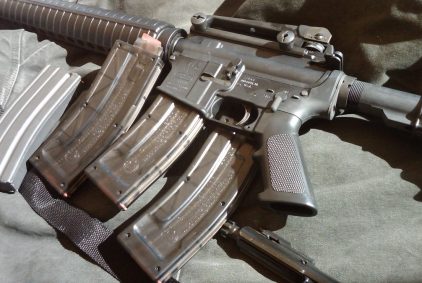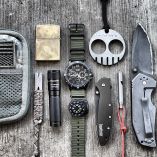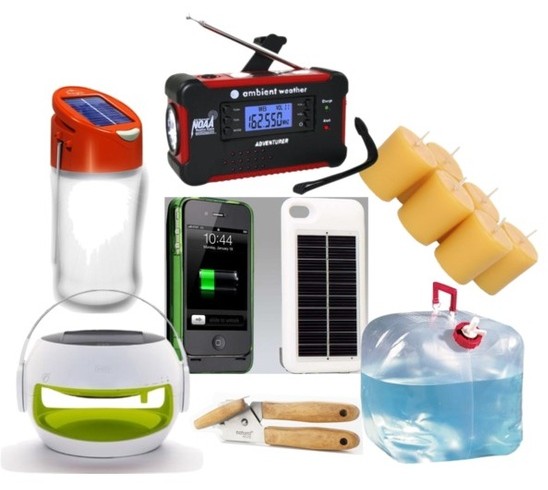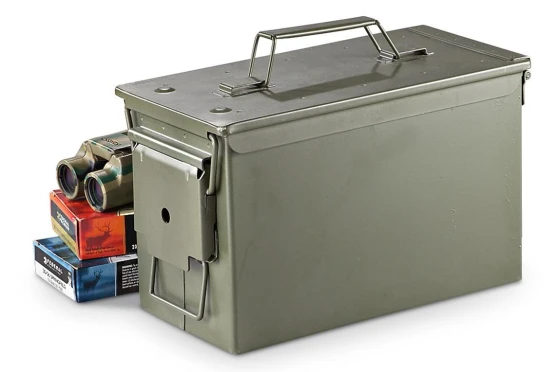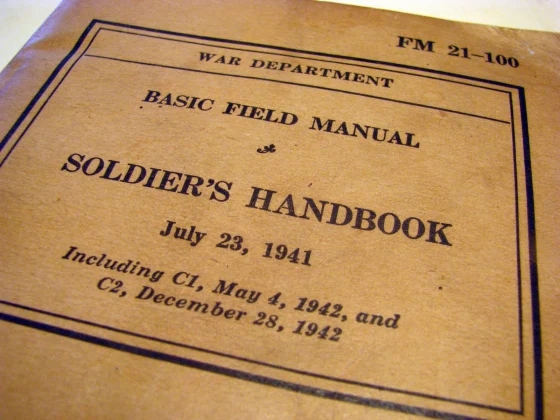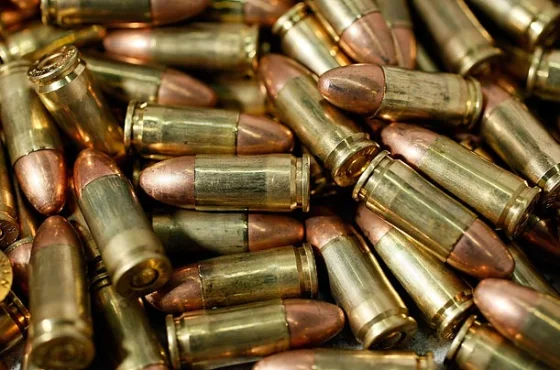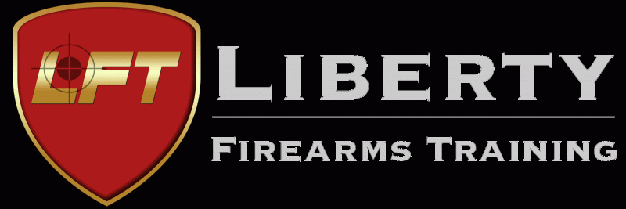Contents:
- Advantages of Using a .22LR Conversion Kit
- Advantage Arms Conversion Kits For Glocks, XDM, and 1911 Pistols
- Tactical Solution’s Conversion Kits For Glock 17 Pistols
- CMMG Brand Conversion Kit For AR-15 Rifles
Advantages of Using a .22LR Conversion Kit:
- It allows you to shoot inexpensive .22 Long Rifle ammunition so that you can shoot longer and more often.
- Turns pistol or rifle into an ideal firearm for first time shooters.
- Makes a great tool for teaching women and young adults how to safely shoot a pistol without the intimidation of larger calibers.
- Less destructive to targets and surrounding structures when used for law enforcement training.
back to top
Advantage Arms Brand Conversion Kits For Glocks, Springfield XD, and 1911 Pistols:
Introduction:
Advantage Arms .22LR conversion kits for Glocks, Springfield XD, and 1911 pistols are finally starting to reappear after being backordered for almost two years. I have one for my G-26 and one for my G-17 and they work great. My boys love shooting them (and so do I). To use these kits you simply remove the slide assembly from your host weapon and replace it with the slide assembly from the conversion kit.
Your conversion kit will come with one 10-round magazine. Extra magazines can be ordered directly from Advantage Arms’s website. Advantage Arms, Inc. is located in California where it is not legal to own magazines that hold more than 10-rounds, therefore they state on their website that they will not make magazines that hold more than 10 rounds. Tactical Solutions makes a magazine that holds 15-rounds in the Advantage Arms kits, but it is not flush-fitting and will extend about half of an inch out of the bottom of the pistol’s magwell.
Dedicated .22LR Caliber Glock:
Rather than continually switch the slides back and forth on our Glocks, several of us have been able to find brand new complete Glock frames on Gunbroker.com. We have put the conversion kits on the new Glock frames to create dedicated .22LR caliber Glock pistols.
Recommended Ammunition:
The manufacturer recommends CCI”s “Mini-Mags” (40-grain round nose, not hollow-point) or Remington’s bulk pack “Golden Bullets”. The manufacturer notes that Remington Golden Bullets work quite well, however, you will get more light strikes and inconsistent loads than with the CCI Mini-Mag loads. With a clean conversion kit and the Remington ammunition I have fired well over 300 rounds before the first malfunction. The conversion kits will not work at all with CCI hollow-points, Winchester, Remington Thunderbolt, PMC, or Federal’s bulk-pack ammo. Gemtech’s own brand of subsonic ammunition (manufactured by CCI) functions flawlessly with the Glock kits (I can’t verify if it will work with the other kits…probably though).
As further discussed below, while both my Glock 26 and Glock 17 conversion kits normally love to ingest large sums of Remington Golden Bullets, they simply perform miserably with them when I have a .22LR suppressor attached. The kits work great, however, with Gemtech’ subsonic ammunition.
Threaded Barrels:
Threaded barrels are available directly from the manufacturer so that you can shoot your conversion kit with a suppressor. The barrels come with an adaptor that steps up the thin threaded barrel (thread pattern unknown) to a 1/2×28 thread pattern that is common to most .22LR suppressors. I found that when removing the suppressor from the barrel adaptor that the adaptor would unscrew from the barrel rather than the suppressor unscrewing from adaptor. A quick fix is to very gently torque the adaptor to the barrel with a 16mm open end wrench. (Keep an extra 16mm open-ended wrench in your pistol’s carry bag and one in your gun toolbox / cleaning kit. They are available at every pawn shop on the planet.) Torque it just enough that when you attempt to remove the suppressor that the suppressor thread connection disengages the adaptor before the adaptor disengages the barrel. Don’t over-torque it. Also, don’t get the bright idea to use thread-locker to secure the adaptor to the barrel. You will need to remove the adaptor from barrel to disassemble the conversion kit for cleaning.
Suppressor Use:
The conversion kits functions great with Gemtech’s subsonic .22LR ammunition and an Advanced Armament Corporation Element II suppressor.  It is very quiet. It is interesting to note that with an Advanced Armament Corporation’s Element II suppressor attached to a full-size frame Glock (G17/G22) and Advantage Arms conversion kit, I have had great success with the CCI Mini-Mag and Gemtech ammunition discussed above, but dismal results with the Remington Golden bullets. The kit normally runs great with the Remington ammunition, but I have tried to use the suppressor the gun suffers more light strikes than it successfully fires. If you use a suppressor, stick to Mini-Mags and Gemtech Subsonic ammunition. I have found that it is VERY important to make sure that the slide rails are lubricated when using a suppressor. If the slide rails start running dry the adaptor kit may still keep running fairly reliably, however if you add a suppressor you may start suffering failures to fully seat a fresh round all of the way into the chamber or light firing pin strikes. Make sure that prior to shooting with a suppressor that you let a drop of gun lube run down the channel of the slide rails. Just a drop on each side will do, but will make all of the difference in the world.
It is very quiet. It is interesting to note that with an Advanced Armament Corporation’s Element II suppressor attached to a full-size frame Glock (G17/G22) and Advantage Arms conversion kit, I have had great success with the CCI Mini-Mag and Gemtech ammunition discussed above, but dismal results with the Remington Golden bullets. The kit normally runs great with the Remington ammunition, but I have tried to use the suppressor the gun suffers more light strikes than it successfully fires. If you use a suppressor, stick to Mini-Mags and Gemtech Subsonic ammunition. I have found that it is VERY important to make sure that the slide rails are lubricated when using a suppressor. If the slide rails start running dry the adaptor kit may still keep running fairly reliably, however if you add a suppressor you may start suffering failures to fully seat a fresh round all of the way into the chamber or light firing pin strikes. Make sure that prior to shooting with a suppressor that you let a drop of gun lube run down the channel of the slide rails. Just a drop on each side will do, but will make all of the difference in the world.
Zeroing and Ballistics:
Ballistics By The Inch states that with CCI’s 40-grain round nose bullets you should expect a velocity of 1014 feet per second when fired from a 4″ barrel. I used the Ballistic iPad app, and assuming the 1014 feet-per-second velocity and a sight height-above-bore of .625″, I calculated the best distance to zero the pistol for the flattest trajectory is going to be 8 yards. With an 8 yard zero you can, of course expect a point-of-aim / point-of-impact at 8 yards, a maximum apogee of .6″ above point-of-aim at approximately 26 yards, point-of-aim / point-of-impact again at approximately 44 yards, at 50 yards your rounds should impact .44″ below point-of-aim, and at approximately 52 yards your rounds should impact .6″ below point-of aim. With this zero you can expect to hit within +/- the height of the sights above the bore (.6″) out past 50 yards. At 100 yards your rounds will impact approximately 10 inches below point-of-aim. At 100 yards you can expect a measly 71 foot pounds of energy out of the bullet, so it is not realistic to effectively defend yourself or to hunt humanely at that distance, but it is nice to be aware of the expected performance should you ever be forced to.
back to top
Tactical Solution’s Conversion Kits For Glock 17 Pistols:

Tactical Solution brand conversion kits work similarly to the Advantage Arms brand kits in that you remove and replace the pistol’s slide assembly with the conversion kit’s, and use the magazine that is supplied with the conversion kit. Tactical Solution slides do not lock to the rear after the last shot. Also, their magazine can hold up to 15-rounds, but they are not flush fitting. I am not aware of a threaded barrel option for the T.S. kits.
back to top
CMMG Brand Conversion Kit For AR-15 Rifles:
Why a .22LR Conversion Kit On An AR15 Rifle:
Using either a dedicated .22LR upper receiver or a .22LR conversion kit is a great way to teach a new AR shooter the fundamentals of shooting the rifle without the intimidating loud noise of the full size battle ammunition, and for the experienced shooter to maintain proficiency at a fraction of the cost of shooting full size .223/5.56 ammunition.
To shoot .22LR ammunition out of an AR platform, you basically have two options. You can buy a dedicated upper receiver/barrel set, or buy a .22LR conversion kit that simply replaces your bolt carrier and fires the .22LR bullets through your AR barrel. The dedicated upper’s barrel will usually be a 1 in 12″ twist (as opposed to your AR’s 1 in 7″ or 1 in 9″ twist). The 1 in 12″ twist will result in a better stabilized .22LR bullet in flight which may result in slightly better accuracy. .22LR rounds fired from a conversion kit and through your AR’s barrel may or may not be as accurate as those fired out of a dedicated upper, but I have been very satisfied with the results using the simple and less expensive conversion kit. I can easily hit coke cans at 50 yards, and a full size paper plate at 100 yards. This is good enough for training purposes.
I live and swear by my CMMG brand .22LR conversion kit. When properly maintained, it is both reliable and accurate. They are around $160 and usually come with a 25 round magazine.
Accuracy With A CMMG Conversion Kit:
Ammunition In Your CMMG Conversion Kit:
 I originally only used Remington Golden Bullets and have always had really good luck and reliability. It is very interesting to note that after recommending the CMMG adaptor and Remington combination to two friends, they both reported disappointing reliability with it. After a little internet research I discovered that some CMMG’s will not reliably cycle Remington ammo and actually prefer Federal’s Bulk Pack .22’s. Both friends tried Federal’s Bulk Pack ammo and had great results. I tried the Federal ammunition and won’t go back to the Remington unless there isn’t any Federal to be had. Where as the Remington worked 85-95% of the time in my conversion kit, the Federal’s are closer to 99% reliability when used in a properly cleaned and maintained rifle. There is no rhyme or reason why one kit prefers one brand of ammo, and another one just like it prefers another brand, but this is not uncommon with .22LR caliber firearms. Two identical guns may have completely different accuracy and reliability results with different ammunition. I recommend that if you buy a conversion kit, buy a couple of hundred rounds of each brand of ammo and experiment to see which works best with yours.
I originally only used Remington Golden Bullets and have always had really good luck and reliability. It is very interesting to note that after recommending the CMMG adaptor and Remington combination to two friends, they both reported disappointing reliability with it. After a little internet research I discovered that some CMMG’s will not reliably cycle Remington ammo and actually prefer Federal’s Bulk Pack .22’s. Both friends tried Federal’s Bulk Pack ammo and had great results. I tried the Federal ammunition and won’t go back to the Remington unless there isn’t any Federal to be had. Where as the Remington worked 85-95% of the time in my conversion kit, the Federal’s are closer to 99% reliability when used in a properly cleaned and maintained rifle. There is no rhyme or reason why one kit prefers one brand of ammo, and another one just like it prefers another brand, but this is not uncommon with .22LR caliber firearms. Two identical guns may have completely different accuracy and reliability results with different ammunition. I recommend that if you buy a conversion kit, buy a couple of hundred rounds of each brand of ammo and experiment to see which works best with yours.
Some people may worry that the lead bullets will dirty up the barrel and foul the gas system of the AR. The higher quality copper-washed Remington and Federal ammunition are not terribly hard to clean up after, and simply firing a round or two of full caliber .223/5.56 ammunition through the rifle at the end of your target practice with blow out any of gas system fouling that might occur.
CMMG .22LR Conversion Kit Hacks & Cheats:
Shooting .22LR Out Of A 5.56mm/.223 Caliber Rifle With Conversion Kit:
If you have a AR-15/M-4 zeroed with the 50-yard “battle-sight zero” that gives you an awesome flat trajectory with the 5.56mm/.223 caliber, you might assume that if you use a .22LR adaptor, such as those manufactured by CMMG, that your rifle is zeroed for the .22LR also. You would be wrong. The .22LR ammunition and the 5.56mm NATO ammunition have completely different ballistic trajectories. The .22LR round is much less powerful than the 5.56mm/.223 caliber battle cartridge and has a much shorter range. If you attempt to shoot at typical .22LR distances you will find the bullets impacting much lower than the point-of-aim. That is not fun, and it doesn’t help someone who is trying to learn to shoot. So what to do? If you want to use a .22LR adaptor effectively while still maintaining the rifle’s 5.56mm NATO capabilities then you will have a slightly more complicated setup depending on how you have your rifle configured. Keep reading and find the description that most closely matches your rifle’s configuration to get some ideas of how to overcome this hurdle.
What Distance To Zero Your CMMG Conversion Equipped Rifle:
The flattest shooting trajectory for a .22LR fired from a rifle with sights that are 2.4 to 2.5 inches height above bore is 25 yards.
Note the graph above (click to enlarge if necessary). From a distance of 13 yards from the muzzle, all the way out to approximately 89 yard, the point-of-impact of the bullet will never be +/- 1″ from point-of-aim. This means that you should be able to hit a 2″ target without any hold-over / hold-under correction anywhere within 13 yards to 89 yards!
The highest distance above point of aim is exactly 1″ at 50 yards.
At 100 yards you can expect your point-of-impact to be 2.37″ below your point-of-aim. To give you a visual, you will make hits below the point-of-aim less than the height that the sights set above the bore. This is pretty impressive, especially considering that on a dedicated .22LR AR15 style rifle if you use a red-dot optic , such as the Bushnell TRS-25 with a 3 minute-of-angle dot (dot that appears 3″ in diameter at 100 yards). When zeroed for 25 yards, if the dot touches the target, you should be able to hit within that dot out to 100 yards. However, since that you are reading this I will assume that you don’t have a dedicated AR15 style .22LR rifle and want to know how to hit POA at 50 yards with 5.56mm NATO and hit POA at 25 yards with .22LR caliber. Keep reading…
Lateral Zero Variations Between 5.56mm NATO and .22LR Fired From A 1-9 Twist Barrel:
Most .22LR rifles have a barrel twist rate of 1 in 12″ (1/12) or 1 in 14″ (1/14) to optimize the stability of the .22LR’s weight and velocity (the bullet spins one complete time for every 12 inches or 14 inches traveled down the barrel) . Most AR15 style rifles have a rifle twist rate of 1/7 or 1/9 to stabilize the much faster 5.56mm NATO round. I was worried that the rifle’s 1/7 or 1/9 rifling might destabilize and lessen the accuracy of the slower .22LR bullet and cause it to impact left or right of the rear sight’s 5.56mm NATO lateral zero setting. This particular rifle has a 1-9 twist rate. When zeroing at 25 yards with .22LR ammunition the lateral difference was negligible. It may be that at greater distances the variation will become more noticeable, but from 20 – 50 yards the rifle will be perfect for hunting small game, and teaching and practicing basic marksmanship and tactics. Does this rifle have the tack-driving accuracy potential with .22LR ammunition as that of a dedicated .22LR rifle? The answer is no, but it will still be accurate enough to train and have fun with.
Rifle Configuration:
How your rifle is set up will determine what (if any) method may work so that you can accurately shoot .22LR while maintaining the rifle’s “defensive ability” to shoot 5.56mm NATO ammunition with minimal and rapid reconfiguration.
- Flat-top receiver with extended rail. No optics. Only backup sights (BUIS).
- A-2 style carry handle sight or rear sight (adjustable for windage and elevation).
- ACOG 4x Power Scope.
- Eotech Heads Up Weapons Sight.
- Magnified Optic With Resettable Turrets.
Dual Front Backup Sights With A Railed, Free Floating Forend:
If your rifle has a railed free-floating type railed forend without the fixed triangle front sight then there is an easy solution. Use two front backup sights (BUIS), as seen in the photo. Most rear backup iron sights are only adjustable left and right, and front sights can only be adjusted for elevation . Set up the most forward front sight for 5.56mm, and another just behind it for .22LR. When you want to shoot .22LR just drop the front forward sight (the one zeroed for 5.56mm/.223 caliber) and raise the second one (that is zeroed for .22LR). To initially set up, use the front and rear sight to zero for 50 yards with 5.56mm NATO. Install your CMMG .22LR conversion kit and then zero your rifle at 25 yards using the second front backup sight (the lateral zero of the rear sight will have already been established when zeroing for 5.56mm NATO). Once installed and sighted in you can use either caliber effectively with your rifle.
This will work fine if you already have a zero-magnification red-dot or holographic sight installed and zeroed for 5.56mm NATO. Simply turn the electric optic off and look through the optic to use the sights zeroed for .22LR the same way that you would use the other backup sight if your optic failed.
With a magnified optic you have to remove it should it become damaged so that you can use your backup sights because you won’t be able to focus (or even see) your front sight. If you want to use the dual backup front sight option, you will have to remove your optic when you shoot. There are several scope mounts that “guarantee” a return to zero when the optic is removed and remounted to the same location on the rifle, but I have never fully trusted those systems for a rifle that I might use to save my life with and therefore, while possible, I don’t recommend removing your magnified optic just to use a second front sight.
Note 1: This setup is intended for rifles that don’t have the traditional triangle front sight tower, but rather a rail along the entire length of the top of the rifle.
Note 2: You will have to use two front sights because with 99% of the backup iron sight sets you adjust elevation with the front sight and can only make windage adjustments with the rear.
Use With A-2 Style Carry Handle Or Backup Sight That Can Be Adjusted For Windage And Elevation:
If you have a rifle with a carry handle (fixed or removable) or an A-2 style rear backup sight that is already “battle sight zeroed” with the 5.56mm/.223 caliber ammo as described on the AR-15 page then the solution is easy.  You can simply set up a target at that distance, move your rear sight up a couple of clicks, shoot three rounds to see where they hit in relation to your point-of-aim, and then repeat until your point-of-aim and point-of-impact are the same. It is very important that you remember where your zero setting for 5.56mm ammo is, and how many clicks you moved your sight to be zeroed with the 22LR ammo. I would advise you to write down these settings on an index card and leave it in your rifle case. Leave the rifle set to its 5.56mm/.223 caliber setting, and adjust the sights when you want to shoot .22LR ammunition. Remember, write down your settings. I can guarantee that in six months when you pull your rifle out of the closet you will have forgotten your settings.
You can simply set up a target at that distance, move your rear sight up a couple of clicks, shoot three rounds to see where they hit in relation to your point-of-aim, and then repeat until your point-of-aim and point-of-impact are the same. It is very important that you remember where your zero setting for 5.56mm ammo is, and how many clicks you moved your sight to be zeroed with the 22LR ammo. I would advise you to write down these settings on an index card and leave it in your rifle case. Leave the rifle set to its 5.56mm/.223 caliber setting, and adjust the sights when you want to shoot .22LR ammunition. Remember, write down your settings. I can guarantee that in six months when you pull your rifle out of the closet you will have forgotten your settings.
Use With ACOG Scope With The CMMG Conversion Kit:
![]() With an ACOG 4x power scope properly sighted in with 5.56mm ammunition and a CMMG conversion kit with Federal’s 36 grain bulk pack hollow-points, use the scope’s 500 meter impact point when shooting a 50 yards, and the scope’s 600 meter point-of-impact when shooting at 100 yards.
With an ACOG 4x power scope properly sighted in with 5.56mm ammunition and a CMMG conversion kit with Federal’s 36 grain bulk pack hollow-points, use the scope’s 500 meter impact point when shooting a 50 yards, and the scope’s 600 meter point-of-impact when shooting at 100 yards.
If you are shooting a 3x or 6x power ACOG, or one with a different style bullet drop compensator then you are on your own to figure out the hack. Please share your results at the bottom of the page.
Using The Eotech Heads Up Weapons Sight With The CMMG Conversion Kit:
Assuming that your rifle is zeroed at 50 yards with 5.56mm NATO / .223 caliber:
- Using .22LR adaptor at 25 yards aim 2 dots high (aim at top edge of small paper plate / human head size target).
- Using .22LR adaptor at 50 yards aim ¼ ring diameter high.
- Using .22LR adaptor at 100 yards aim 1/3 ring diameter high.
Magnified Optic With Resettable Turrets:
If you have a AR rifle equipped with simple cross-hairs and resettable turrets then you have an easy solution.
First I would recommend that you zero your rifle so that your rifle is zeroed at 50 yards and then set your resettable turrets to the zero setting. Next you could use a ballistics calculator to figure out the different setting required so that you simply aim with the cross-hairs at different known distances (example: 100, 200, 300, 400, 500 yards, etc.). Go to the range and verify those settings. Then move your turrets back to the “zero” (50-yard) setting for general shooting (point-blank out to 250 yards). Now your rifle is set up for 5.56mm NATO. Be sure to write down the settings and leave them on a card in your rifle’s bag. You will forget the settings. I promise.
To set the rifle up for .22LR, install your conversion kit and simply adjust your elevation turret until you are hitting POA at 25 yards. Write down your turret setting for .22LR. If you want to get very technical, you can shoot at different distances to figure out and record the different setting required for exact known distances rather than rely on a single “set-it-and-forget-it” setting (example: 25, 50, 75, 100 yards, etc.). When ever you want to use your conversion kit, simply adjust the turret to the setting(s) that you recorded at the initial setup of the rifle and shoot away.
If you have a rifle scope with some type of bullet drop compensation you will first want to zero the rifle scope per the manufacture’s instruction with 5.56mm/.223 caliber ammunition. Then you can set up targets at various distances and use the bullet drop compensation marking and figure out which marking coincides with point of impact with the .22LR ammunition (example: The 500 meter setting for 5.56mm NATO coincides with the 50 yard impact point for .22LR) Again, write it down on a card and leave it in your rifle case. You will forget your numbers. I promise.
Replacement Storage Tube For The CMMG Conversion Kit:
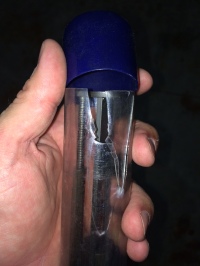 CMMG brand .22LR conversion kits for the AR-15 brand of rifles are shipped in a cheap plastic tube. It’s very important to store your conversion kit in the tube when not in use so that it doesn’t get bent or damaged in storage or transport. I also keep the rifle’s expensive regular bolt carrier assembly in the tube while employing the conversion kit in the rifle so that it doesn’t get damaged should it be accidentally dropped on the ground. Unfortunately the clear plastic tubes that come with the conversion kits are fragile and will eventually become brittle and crack (as seen in the photo right).
CMMG brand .22LR conversion kits for the AR-15 brand of rifles are shipped in a cheap plastic tube. It’s very important to store your conversion kit in the tube when not in use so that it doesn’t get bent or damaged in storage or transport. I also keep the rifle’s expensive regular bolt carrier assembly in the tube while employing the conversion kit in the rifle so that it doesn’t get damaged should it be accidentally dropped on the ground. Unfortunately the clear plastic tubes that come with the conversion kits are fragile and will eventually become brittle and crack (as seen in the photo right).
 I made a replacement storage tube using a piece of 1-1/4″ diameter PVC pipe and two end caps (as seen in the photo above on the right). I cut the pipe so that the conversion kits fits with little play. I glued one cap onto the tube. The other cap will fit on the tube snugly and not come off unless it is pulled off with a small amount of force. I labeled the tube so that no one would mistake it for a Terminator style pipe bomb.
I made a replacement storage tube using a piece of 1-1/4″ diameter PVC pipe and two end caps (as seen in the photo above on the right). I cut the pipe so that the conversion kits fits with little play. I glued one cap onto the tube. The other cap will fit on the tube snugly and not come off unless it is pulled off with a small amount of force. I labeled the tube so that no one would mistake it for a Terminator style pipe bomb.
If I were making another one I would glue a small piece of soft foam in the insides of each end cap so that the conversion kit or bolt carrier assembly would fit nice and snug without any slop.
The total cost of the new storage tube was about $7 US.
back to top
Related Articles:
- Savannah Arsenal’s Rimfire Essentials Page
- Savannah Arsenal’s Rimfire Optics & Accessories Page
- A Great Red-Dot Optics For .22LR Rifles: Bushnell TRS-25
- Bushnell Trophy Red-Dot: No-Go!
- Make A New Storage Tube For Your AR-15 22LR Conversion Kit
- CMMG Brand Conversion Kits For AR-15 Rifles
- Gemtech’s Subsonic .22LR Ammunition = WIN!





